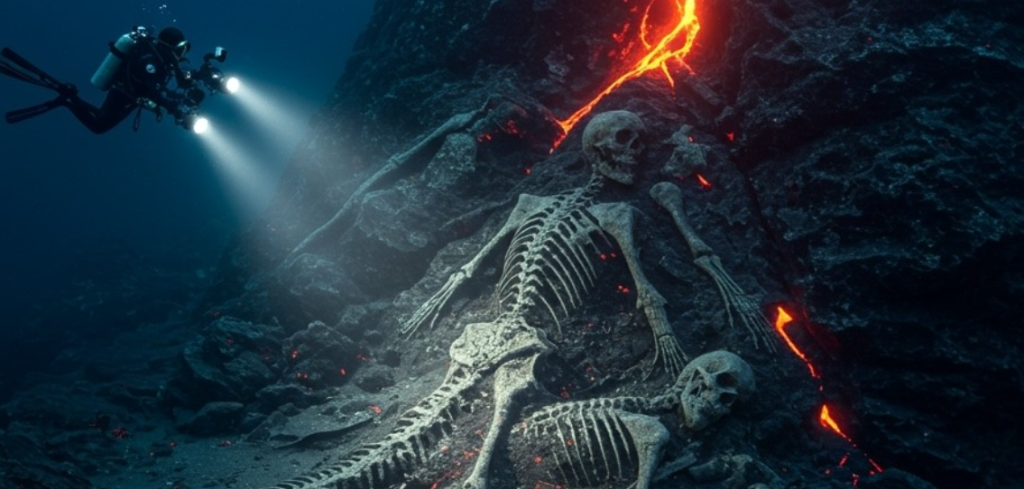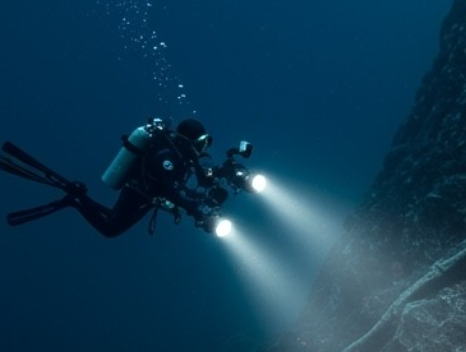A remote deep-sea expedition has unleashed a worldwide storm of speculation after divers documented two intertwined skeletal figures resting beside an active volcanic fissure on the ocean floor. The dramatic scene was captured during a geological survey near a deep-water rift system, where superheated currents illuminate the surrounding terrain with an eerie red glow. The skeletons appear to combine human-like upper structures with elongated, serpentine tails, creating a configuration unlike anything previously recorded in marine or anthropological research. The extreme heat, mineral deposits, and isolation of the site have surprised experts who argue that preservation of this nature in such a hostile environment is highly improbable. Images of the discovery spread rapidly online, immediately becoming a global flashpoint of scientific and cultural debate.
Thank you for reading this post, don't forget to subscribe!
Within the scientific community, the find has triggered fierce disagreement. Some evolutionary biologists suggest the remains could represent an unknown species adapted to extreme volcanic ecosystems, pointing to the skeletal structure as potentially indicative of specialized deep-ocean physiology. Marine archaeologists, meanwhile, propose the possibility of symbolic or ritualistic placement, arguing that certain coastal civilizations historically mythologized oceanic fissures and geothermal vents. However, a substantial number of researchers remain sharply skeptical. They warn that the distinct hybrid appearance of the skeletons may result from natural deformation, mineral accretion, or a deliberate modern fabrication designed to exploit public fascination with mythical sea creatures. Forensic analysts have also emphasized the need for detailed bone composition testing, as exposure to volcanic minerals can mimic fossilization patterns, complicating initial assessments.
As the discovery continues to dominate global headlines, international research teams and government agencies are rushing to investigate the site, though access is limited due to extreme environmental hazards. Plans for robotic sampling, 3D mapping, and controlled retrieval are underway, but officials caution that any operation near an active volcanic vent carries serious risk. Meanwhile, public speculation is spiraling at unprecedented speed. Theories range from evidence of ancient ocean-dwelling civilizations to claims of genetic anomalies, suppressed historical knowledge, or orchestrated misinformation campaigns. Cultural historians note that myths of mermaids, naga, and hybrid sea beings appear across nearly every ancient culture—adding symbolic weight to the find regardless of its scientific interpretation. Whether these intertwined skeletons ultimately prove to be an extraordinary natural formation, a misunderstood biological remnant, or an elaborate modern intervention, experts agree that the discovery has already become one of the most polarizing and sensational underwater revelations of the decade. As investigators prepare for formal analysis, the world waits with mounting tension, asking the question now echoing across every platform: what exactly is emerging from the volcanic depths of our oceans?
